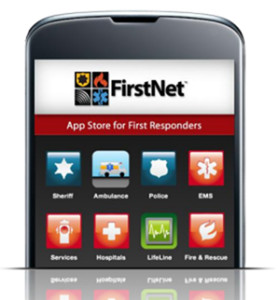How FirstNet Will Affect Public Safety
Posted on May 12, 2016.
The First Responder Network Authority – FirstNet – was brought to life by an act of Congress in 2012 with the goal of building a nationwide wireless broadband network for as many as 13 million public safety personnel.
How FirstNet Will Affect Public Safety
Posted on May 12, 2016.
 The First Responder Network Authority – FirstNet – was brought to life by an act of Congress in 2012 with the goal of building a nationwide wireless broadband network for as many as 13 million public safety personnel. Those behind the initiative foresee an interoperable communications network for firefighters, police officers and paramedics across the country, all benefiting from state-of-the-art technologies, location information, specialized devices and access to the right data at the right time. The First Responder Network Authority – FirstNet – was brought to life by an act of Congress in 2012 with the goal of building a nationwide wireless broadband network for as many as 13 million public safety personnel. Those behind the initiative foresee an interoperable communications network for firefighters, police officers and paramedics across the country, all benefiting from state-of-the-art technologies, location information, specialized devices and access to the right data at the right time.
PHOTO COURTESY: New York State Division of Homeland Security and Emergency Services (NYS DHSES, psbb.ny.gov)
It is a bold vision. But visions don’t fight fires, combat crime or provide emergency medical services, and so it should come as no surprise that the word is still trickling out to many of those on the front lines of public safety.
“There are a lot of benefits to FirstNet, and it’s hard to envision them until you can touch them,” said Harlin McEwen, chairman of the FirstNet Public Safety Advisory Committee and retired police chief of Ithaca, N.Y. Among its many advantages, the network will be more secure and more reliable than commercial networks, and it will reach areas considered unprofitable by commercial carriers.
Public safety personnel will have priority access to the network, which means they will be able to transmit data, video, images and text even during catastrophes when the commercial networks tend to get over-loaded. Initially, the network will supplement public safety’s dedicated land mobile radio networks used for voice communications, but eventually it is expected to carry mission-critical voice calls as well.
FirstNet users will have dedicated access to new broadband capabilities while reaping the benefits of consumer-driven technologies – lower costs and rapid evolution – because the network will be based on the commercial standard for Long Term Evolution (LTE) service. It will enable emergency responders to exchange real-time data and video feeds from the site of a fire, medical emergency or crime in progress, improving their situational awareness. More accurate location-based services are also expected on the FirstNet network so that responders inside buildings can be tracked whether they are on the 18th floor of a high-rise or in a subway.
“When you think about what capability a teenager has with a smartphone, first responders don’t have even that same capability with their devices in buildings,” said Alan Purdue, retired director of Emergency Services in Guilford County, N.C. and executive director of the Safer Buildings Coalition. “Right now I can take my phone, hit the Uber app, request a ride and it knows where I’m at. The driver arrives and takes me to my destination. But if I’m a firefighter with a crew inside a building, I don’t have the capability to pinpoint where they are.”
FirstNet is an independent entity within the National Telecommunications and Information Administration at the Department of Commerce. Its board of directors includes the U.S. attorney general, the secretary of the Department of Homeland Security, the director of the Office of Management and Budget and 12 members appointed by the secretary of the Commerce Department. Congress authorized $7 billion in funding and 200 Mhz of spectrum for the network. The group released a request for proposal in January, and it hopes to award a 25-year contract to a commercial partner in November.
A wide range of public safety applications and enhanced devices are also part of the FirstNet plan. The devices need to be rugged, secure and convenient, and they must account for all the gear first responders wear and carry, including heavy gloves. What’s more, they need to be easy to administer.
The one thing nobody promised about the FirstNet vision is that it would be quick or easy to implement.
“This is a very complex and challenging project,” Chief McEwen said. “You have to convince people that what is happening will help them. That’s difficult to do when you’re talking about something that’s not in place. The people in public safety who have been intimately involved would tell you that FirstNet is taking on a very positive role, and it looks better every day.”
By Caron Carlson – Safer Buildings Coalition Contributor
Learn more about joining the SBC by clicking here. Also be sure follow us on our Facebook page, Twitter (@SaferBuildings), and connect with us on LinkedIn. |